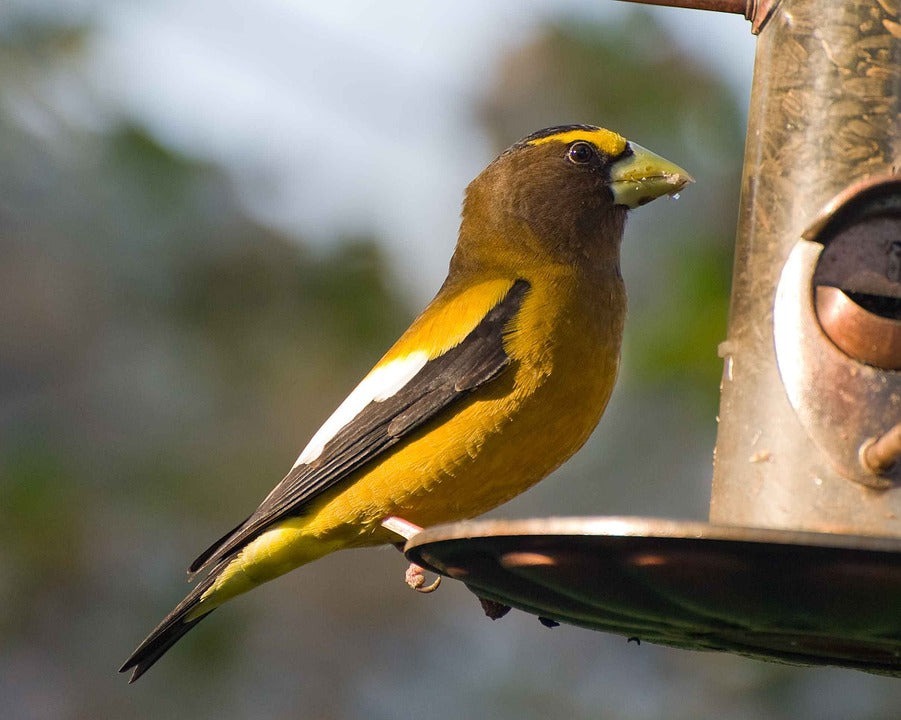Offer
Provide additional details about the offer you're running.
Provide additional details about the offer you're running.
Provide additional details about the offer you're running.

Adding a splash of colour to your bird feeders over the fall and winter months is a welcome treat. While the northern cardinal does a great job of it, adding the unmistakable vibrant, yellow colouring of the evening grosbeak is a treat to behold.
This year-round resident can also prove to be helpful to many other species of birds native to your backyard and feeders at any time of the year. Equipped with large, strong bills, the evening grosbeak will often crush or open seeds otherwise deemed too large for smaller species such as pine siskins and common redpolls. For this reason, you will often notice these species trailing close behind a feeding evening grosbeak in anticipation of some otherwise unattainable seed.
Identification
A large finch species, the evening grosbeak is commanding in its appearance, marked with a striking yellow plumage and dark head boasting a stout beak, designed for smashing the hulls of larger seeds. In addition to their overall yellow appearance, males also sport flashy black and white colouring on their wings and a bright yellow stripe over the eye. Females and juveniles sport a mostly grey plumage, but also can be seen with the same white and black wings their male counterparts are equipped with as well.

Where to Find the Evening Grosbeak
The evening grosbeak can be found throughout the year in most southern regions in Canadian provinces, and throughout a good portion of the continental United States during the winter months as some northerly birds head to slightly warmer locales. The unfortunate reality is that this species is on the decline, particularly here in the eastern regions of Canada and the United States.
This being said, if there are local birds in your area, they will undoubtedly make regular appearances at your backyard feeders. Outside of that, these birds can be found high in the trees of forested areas and in high elevations in the west.
Vocals
Seeming somewhat introverted, these songbirds do not have any songs in their repertoire but have been noted to let out a few short warbles from time to time. Otherwise, these birds can be heard vocalizing chips and short, but piercing calls.
Author: Louise Beckinsale
High Quality Blend